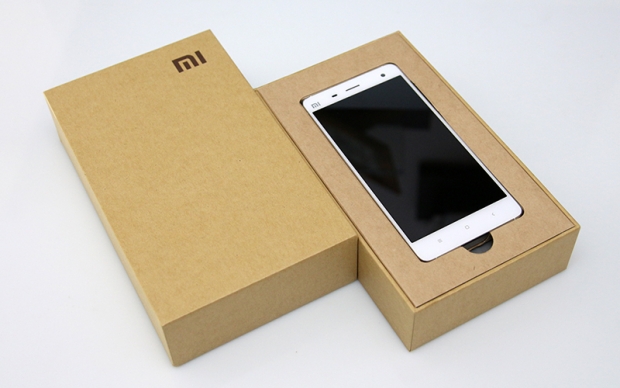Index
Specs and Performance
The Mi4 is based on last year’s hardware. However, the Snapdragon 801 isn’t a slow processor by any measure. It’s still used in millions of phones, and even some recently launched devices like the Lenovo ZUK Z1 and OnePlus X are based on the same 32-bit processor.
The Qualcomm chip is backed by a generous 3GB of RAM, and a nice all-round spec in general.
Xiaomi Mi4 Overseas Edition specs:
- SoC: Qualcomm Snapdragon 801 (MSM8794AC), 28nm
- CPU: Four Krait 400 cores up to 2.5GHz
- GPU: Qualcomm Adreno 330 up to 578MHz
- RAM: 3GB LPDDR3 933MHz
- Storage: 16GB eMMC 5.0 internal storage (single partition), non-expandable
- Display: 5-inch 1080p JDI IPS panel
- OS: MIUI 7 based on Android 4.4.4
- Rear camera: 13-megapixel Sony IMX214 sensor, f/1.8 aperture
- Front facing camera: 8-megapixel Sony IMX2019PQ sensor, f/1.8 aperture
- Battery: 3080Ah lithium polymer, non-removable
- Dimensions: 139.2 x 68.5 x 8.9mm
- Weight: 149g
- WiFi and Bluetooth: 802.11b/g/n WiFi and Bluetooth 4.0
- Sensors: ambient light, direction, gravity, accelerometer, compass, temperature, pressure, proximity, gyroscope, rotation, GPS, A-GPS. GLONASS, BeiDou
- SIM card: single SIM (micro SIM)
- Network support:
2G: GSM 850/900/1800/1900MHz
3G: WCDMA 850/900/1900/2100MHz
4G: n/a
Not a lot to say about the spec, other than to point out a few details that set the Mi4 Overseas Edition apart from similarly priced phones. The basic hardware package is good (Snapdragon 801, 3GB RAM, eMMC 5.0 storage), but there’s only one storage option (16GB) and there is no microSD slot.
Both cameras pack good optics with a speedy f/1.8 aperture on top of Sony sensors. Speaking of sensors, the Mi4 has a comprehensive sensor suite, including BOSCH temperature and pressure sensors, rotation and linear acceleration sensors and so on. The most obvious shortcoming is lack of 4G connectivity, but that’s sort of the point. This is a phone designed for markets without 4G coverage, or people who simply don’t want to spend a lot of money on good data plans and are content with 3G speeds.
Another surprise is the fact that the Mi4 hasn’t moved to Android 5.x yet. MIUI 7 is usually based on the Android 5.x, but on the 32-bit Mi4 it’s still on KitKat. This isn’t a big deal because the end-user won’t be able to tell the difference. Rumour has it that Xiaomi is skipping Android 5.x on the Mi4 and moving straight to Android 6.0 in a few months.
So, let’s take a look at some performance figures:
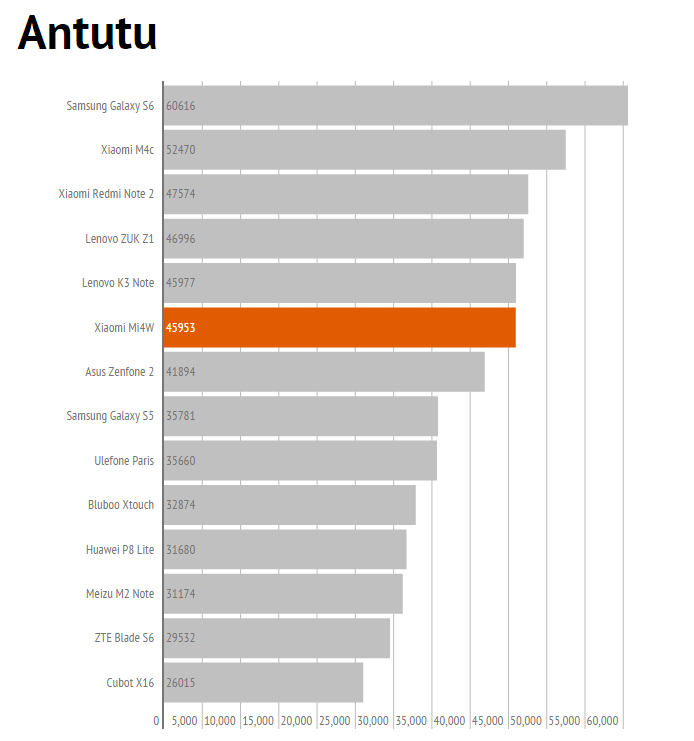
In Antutu, the Snapdragon 801 ends up behind some octa-core A53 chips, but in real life, the situation is somewhat different, as the rest of the benchmarks will prove.
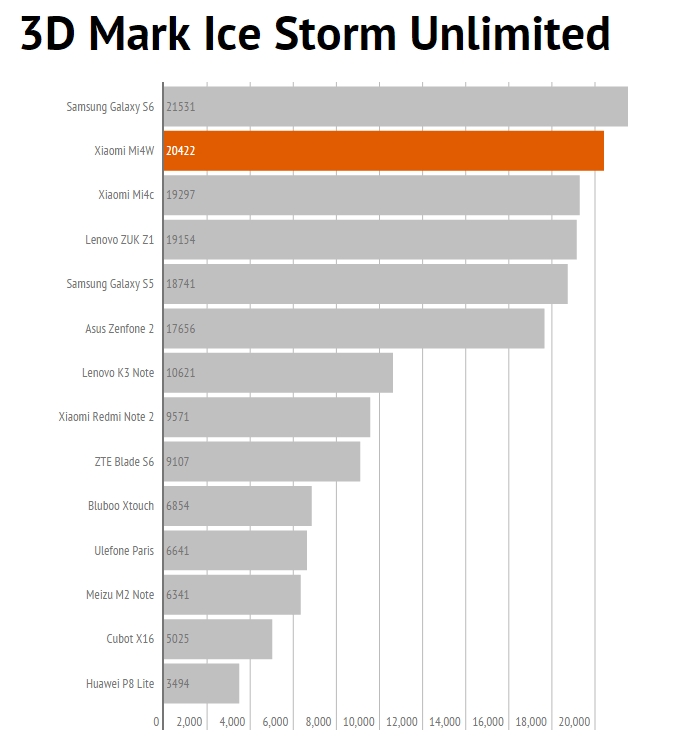
The huge Adreno 330 GPU wipes the floor with budget octa-cores, and it even manages to outpace the Adreno 418, used in the 64-bit Snapdragon 808. This is an excellent result, especially when you consider the age of the Snapdragon 801.
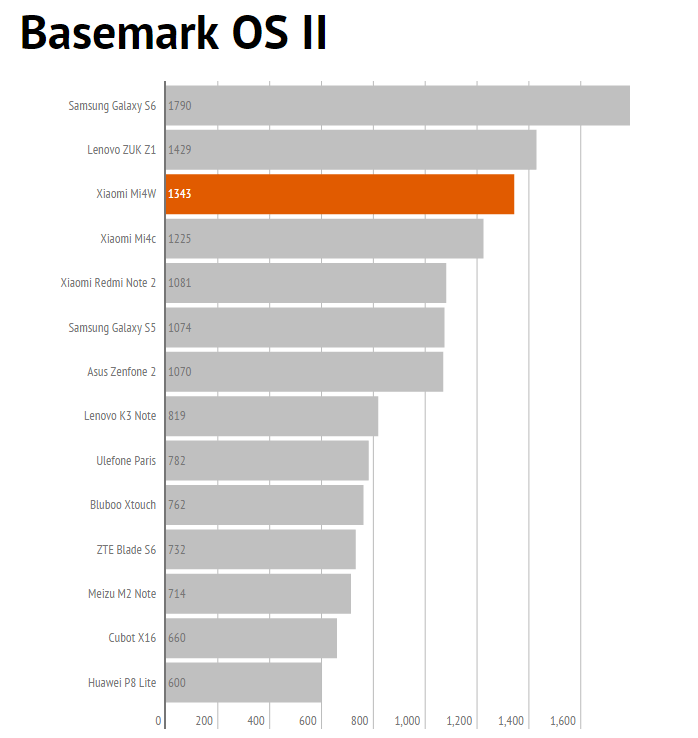
Basemark likes a lot of memory and fast storage, so the Mi4 manages to trump the Mi4c, which has less RAM and a marginally faster processor. However, the Mi4 ends up slower than the Lenovo ZUK Z1, with the same processor and 64GB of eMMC 5.0 storage.
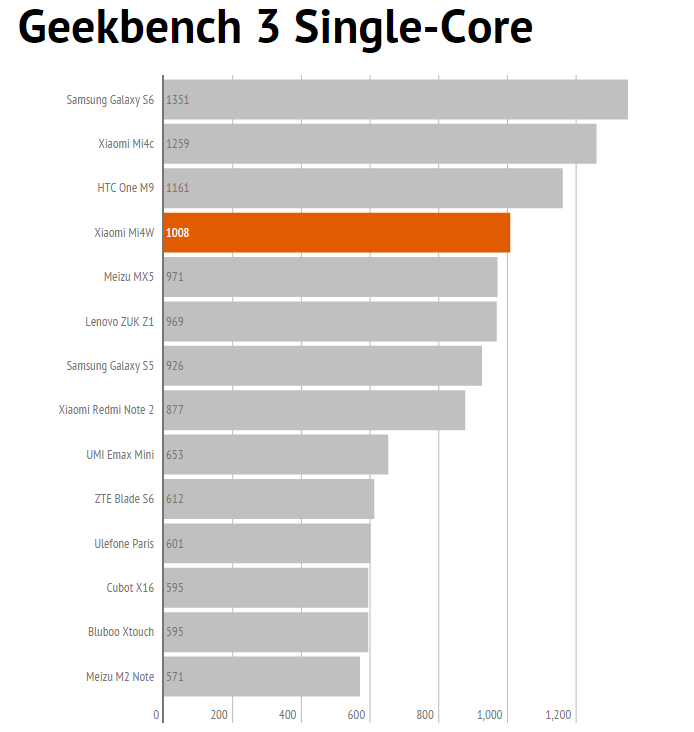
The Geekbench single-core test is a good indicator of single-thread performance. It shows the Krait 400 core is significantly faster than Cortex-A53 cores, but the lead is not that big. The Snapdragon 801 still ends up about 25% slower than the Snapdragon 808, which packs two Cortex-A57 cores.
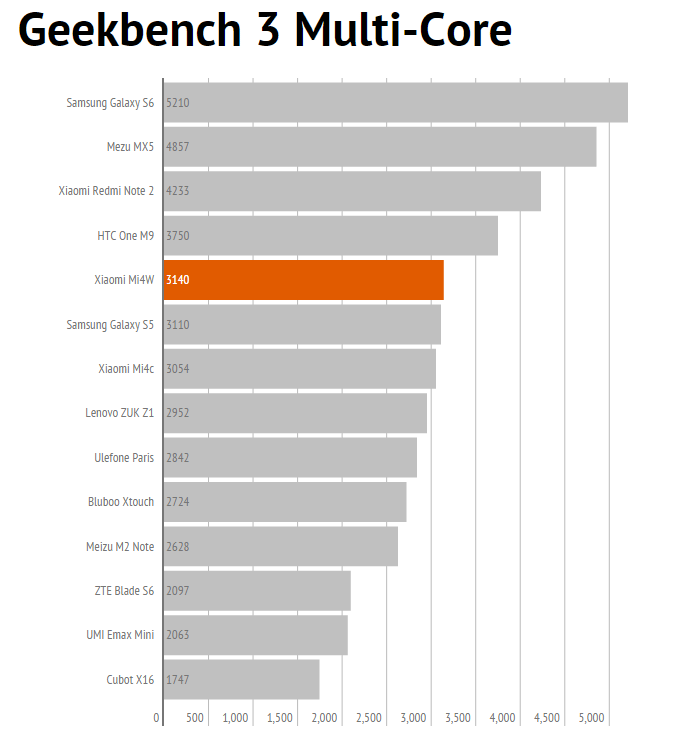
In the multi-core test, the Snapdragon 801 ends up quite a bit slower than MediaTek's mid-range Helio X10 (Redmi Note 2, Meizu MX5).
In any case, overall performance is quite good, despite the fact that the Snapdragon 801 is a relatively old 32-bit processor. It still has a lot of CPU muscle and its GPU is powerful enough to deal with any Android game.

